“Build it and they will come” is absolutely terrible advice when it comes to ecommerce.
You can’t create a business and wait for the customers to start rolling in. That would be like decorating your house for a party and not inviting anyone.
Selling online works much the same way.
First, you have to make some noise, and then you have to form a connection, build trust, and demonstrate that your products are awesome.
In this article, you’ll learn exactly what a sales funnel is, how it can help you grow your business, and how to create one.
Let’s get down to it.
Post Contents



What is a Sales Funnel?
A sales funnel is a process that businesses use to turn strangers into customers, and customers into brand advocates. It’s often broken down into four steps:
- Attract: Use marketing and advertising methods to attract potential customers.
- Convert: Incentivize potential customers to share their contact information so that you can nurture the relationship.
- Close: Motivate potential customers to take action and become paying customers.
- Delight: Overdeliver and delight customers in order to retain their business and turn them into brand advocates.
The image below from HubSpot maps out this sales funnel process for businesses:
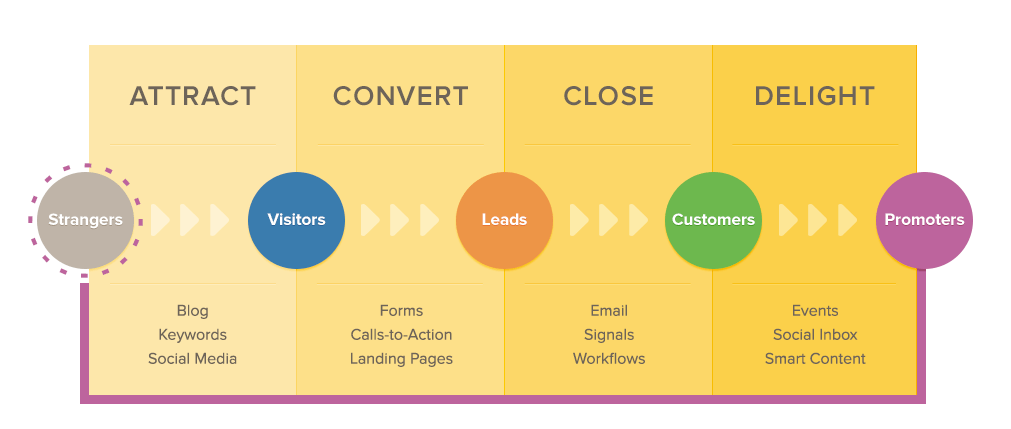
→ Click Here to Launch Your Online Business with Shopify
The sales funnel can also be explained by the stages a customer must go through before purchasing – this is often referred to as “AIDA”:
- Awareness: The potential customer must become aware of your product or service.
- Interest: Their awareness must develop into interest so that they voluntarily learn more about your product or service.
- Desire: Their interest must then transform into a desire for your product or service.
- Action: Their desire must be strong enough to compel them to take action and become a paying customer.
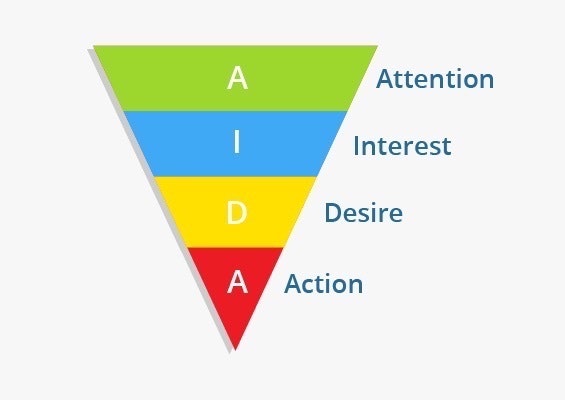
Before the internet, it was difficult to identify where individuals were within a sales funnel.
This made marketing difficult.
If you don’t know where an individual exists within the sales funnel, you can’t tailor your marketing messaging to lead them to the next stage.
However, digital marketing techniques and tools have turned sales funnels from an art into an exact science.
Now, sales funnels can be perfectly engineered to hook in new potential customers and lead them to purchase with impressive efficiency.
Sounds good, right? Now, let’s dig a little deeper.
Breaking the Sales Funnel Down into 7 Stages
The sales funnel can be broken down further into seven distinct stages:
- Exposure
- Discovery
- Conversion
- Consideration
- Close
- Relationship
- Advocacy
Let’s run through each of these stages and explore the outcomes needed to move a potential customer onto the next stage of the buyer’s journey.
Sales Funnel Stage 1: Exposure
Before you can start leading people down the sales funnel, you need to get their attention.
This may start with an advertisement.
Travel gear brand Minaal introduce potential customers to their products through Facebook Facebook advertisements:
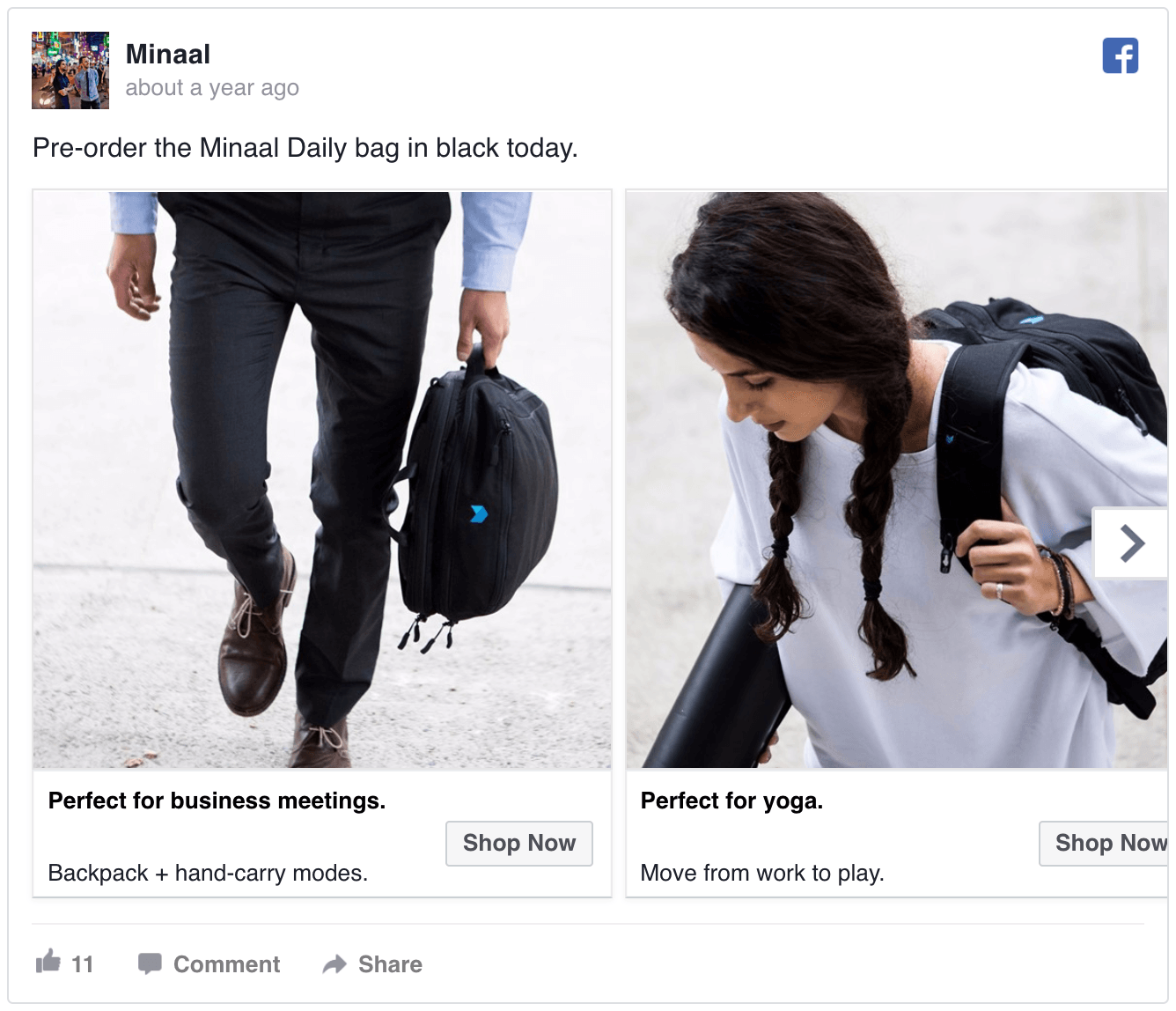
This exposure makes Minaal’s target market aware of their presence.
Your ads should remind people of the problems they face or the desires they have, and position your brand as the solution to those problems or desires.
Okay, now remember AIDA?
At this point, you’ve created awareness. However, to move a potential customer onto the next stage of the buyer’s journey, you must turn awareness into interest.
Sales Funnel Stage 2: Discovery
Once you’ve created awareness and turned it into genuine interest, the next stage of the sales funnel can take place: discovery.
This is the point where a potential customer becomes interested in learning more. At this stage, it’s important to educate the potential customer.
You also need to nurture your relationship with the customer, build trust, and position yourself as the perfect solution to their problem or desire.
Grooming brand Dollar Shave Club does a great job of this through their blog content:
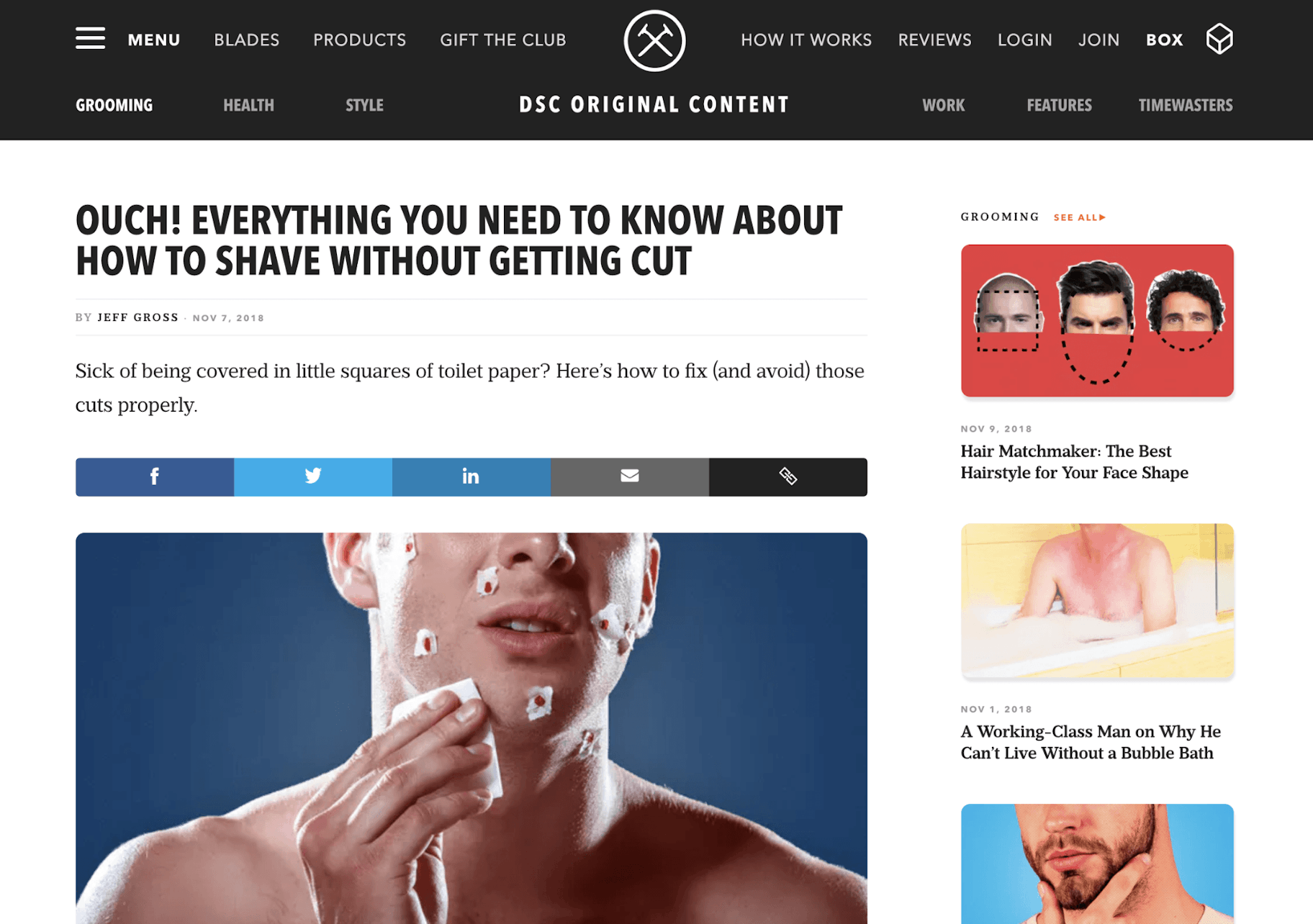
Next up:
Sales Funnel Stage 3: Conversion
Once a potential customer understands their problems or desires and the solutions available, you need to convert them into a “lead.”
What is a lead?
In marketing and sales, a lead is someone who has expressed interest in what you are selling. Maybe they shared their contact information with you, or maybe they have simply interacted with your website or social channels.
Whether you got an email address or your Facebook pixel tagged someone who stopped by your shop, you can target leads with marketing messages designed to further the relationship.
There are tons of different ways to do this.
Marketers will often use something called a “lead magnet” (although a more honest word is “bait”).
The lead magnet is a compelling offer given to website visitors who provide their email address and sign up to your mailing list.
Here’s a great example of a simple lead magnet from apparel brand Taylor Stitch:
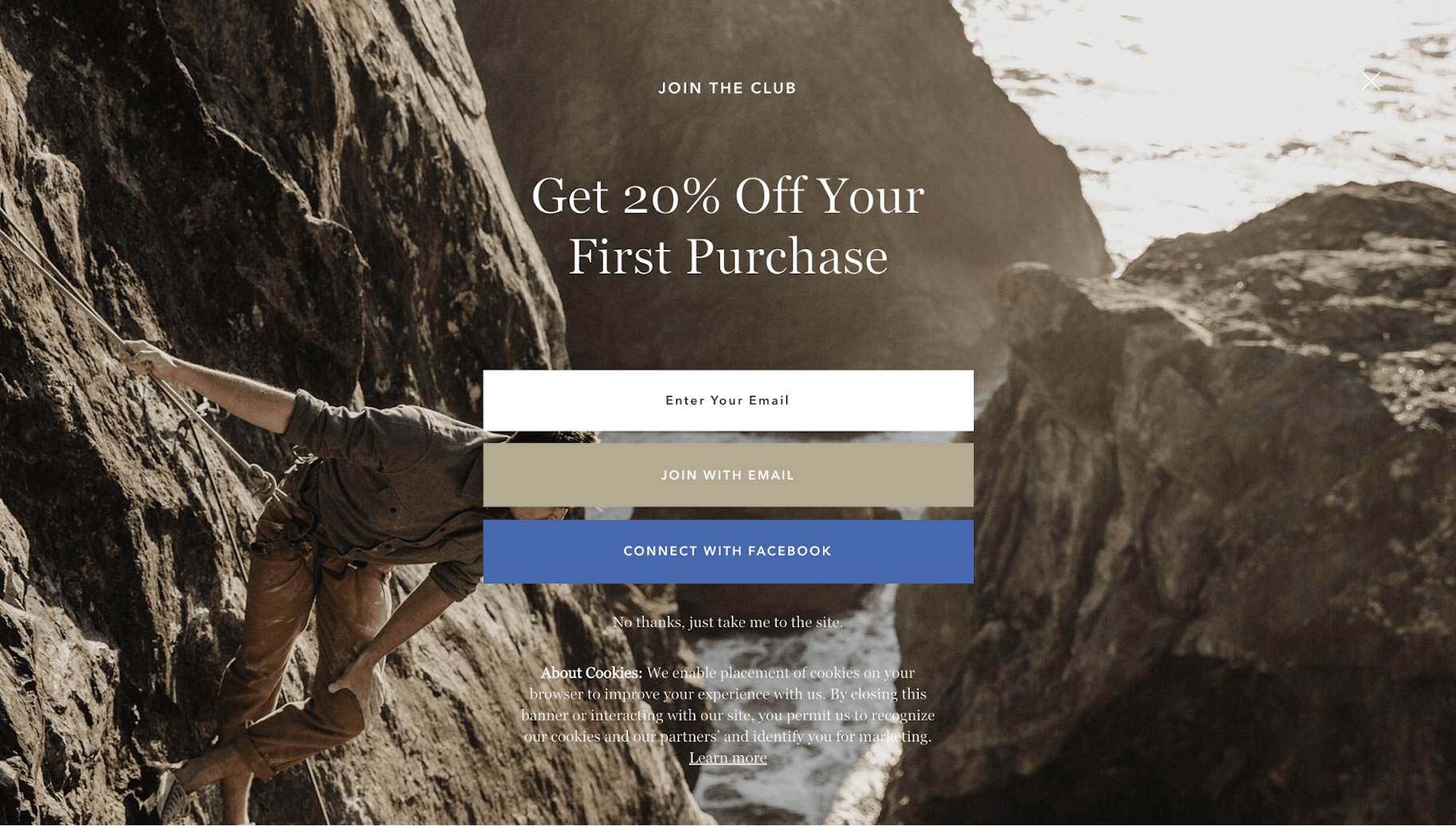
Another great way to nurture leads is something called “retargeting.”
This is a form of pay-per-click advertising that allows you to display ads to people who have previously viewed or interacted with your website or content. Even if you don’t collect an email address, platforms like Facebook, Instagram, and AdWords use cookies and other tracking methods to reach out to these potential customers later on.
The image below shows some of Facebook’s retargeting options:
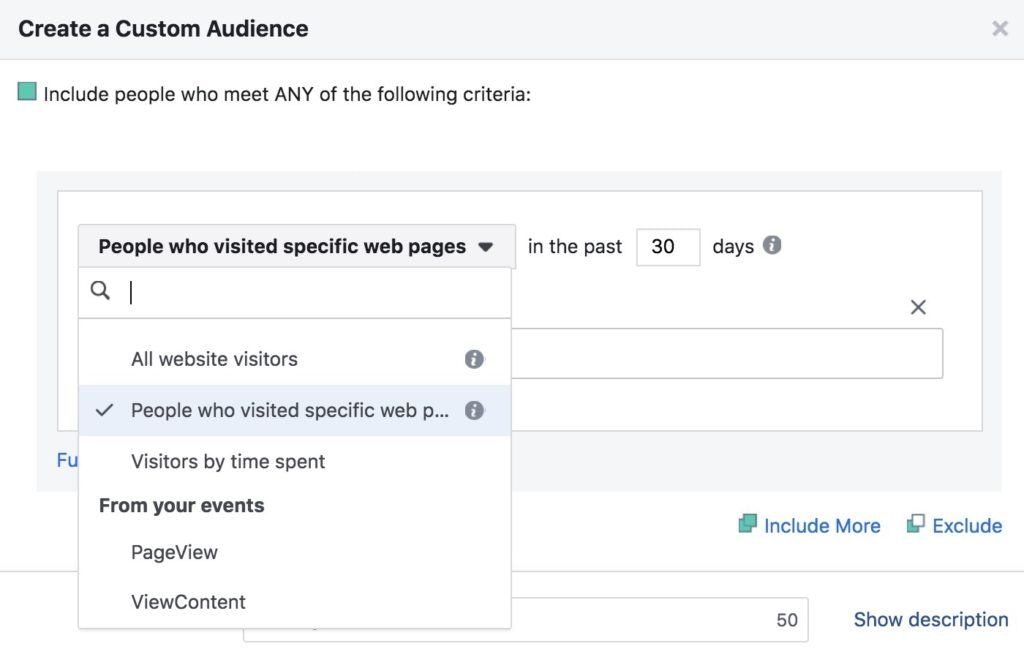
During the conversion stage of the sales funnel, the potential customer must take some form of action that furthers the relationship with your brand.
Now, you can ramp things up.
Sales Funnel Stage 4: Consideration
Once you’ve converted a potential customer into a lead, you need to entice them to seriously consider purchasing your product or service.
This is when you turn their interest into desire.
During this stage, the lead might look at your products or explore what deals or packages are on offer.
Ideally, you’ll have developed so much trust and brand value that they won’t even consider checking out your competitors.
Dollar Shave Club has a page on their website dedicated to the consideration stage:
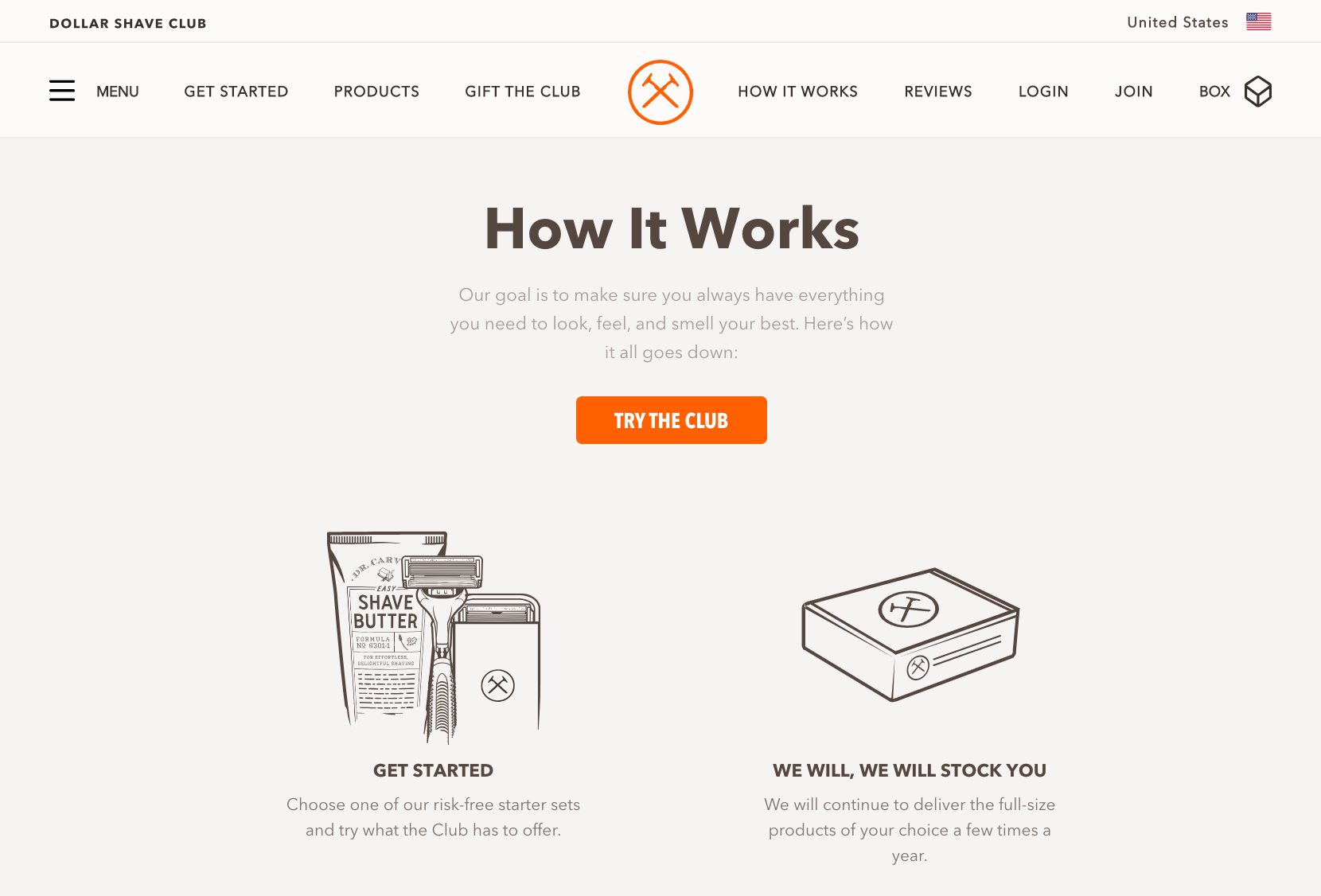
By now, the lead should have a solid understanding of their problem or desire, and the solution that you provide.
Sales Funnel Stage 5: Close
Now’s the time to close the sale.
During this stage, you need to increase the desire for your product or service. You can do this by drawing the lead’s attention to a great product page, positive reviews, and a strong call-to-action.
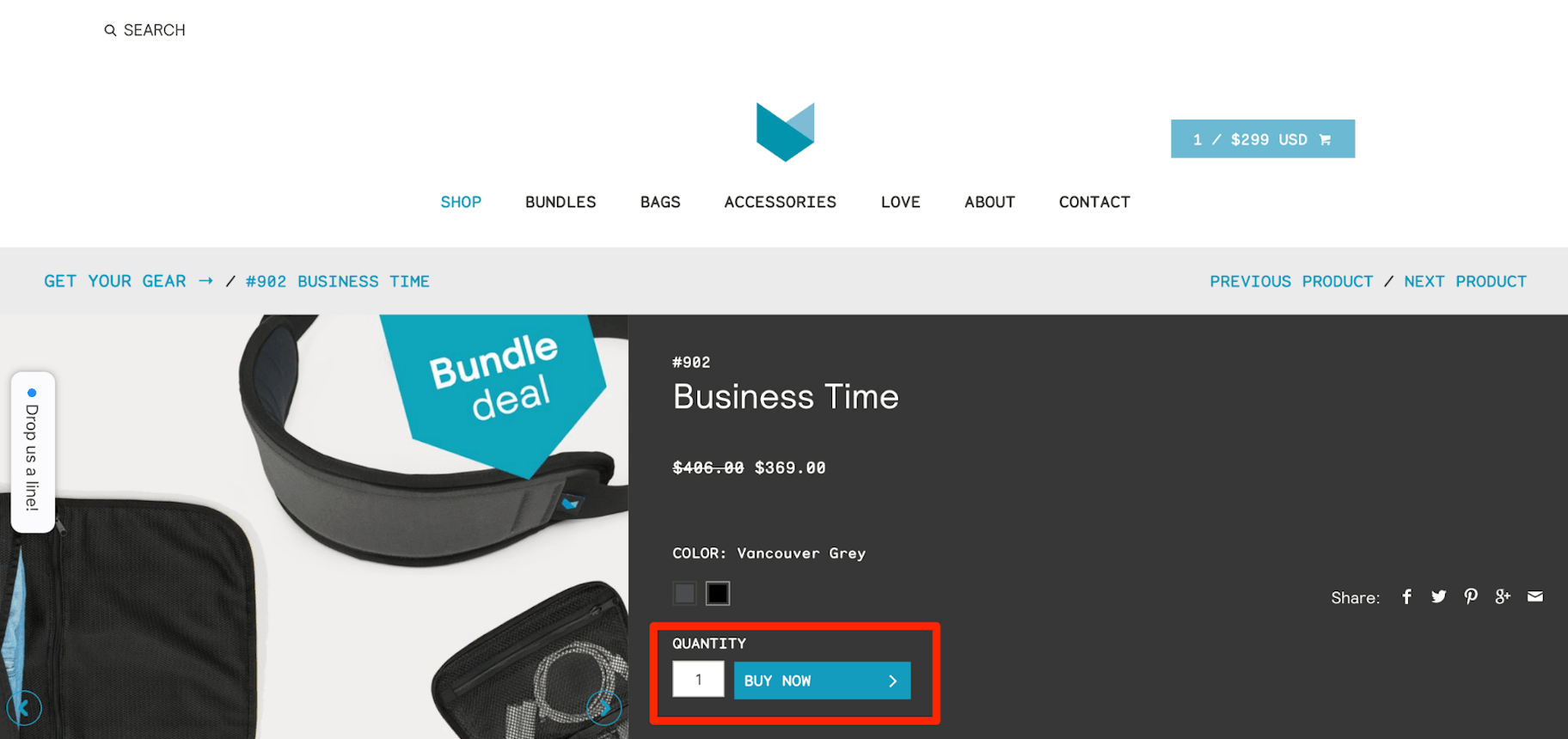
If you’ve successfully nurtured the lead through each stage of the sales funnel, they’ll purchase your product or service.
Congratulations, your sales funnel is working and you’ve just landed a new customer!
But the work doesn’t stop there.
Sales Funnel Stage 6: Relationship and Retention
Now that you’ve closed the sale and secured a new customer, you need to reaffirm that they’ve made the right decision by following through on your promises.
What’s more, you need to continue your marketing communications, because this is when you can start making the real money.
The name of the game now is customer retention.
This is vital to get right because a 5 percent increase in customer retention can increase company profits by 25 percent to 95 percent.
Plus, repeat customers spend 67% more than new customers.
Once you’ve delighted the customer, you can move them to the last stage of the sales funnel.
Sales Funnel Stage 7: Advocacy
This is when you turn happy customers and into brand advocates.
These are people who love your brand and happily spread the word about how awesome you are.
And make no mistake: This is powerful stuff.
Just think of Apple fans who will happily argue until they’re blue in the face that iOS is better than Windows.
To create advocates, you can set up a referral program, or encourage happy customers to leave a review or share their experience on social media.
Ideally, the customer’s experience has been so good that they will tell everyone about you without being prompted, like these Dollar Shave Club customers:
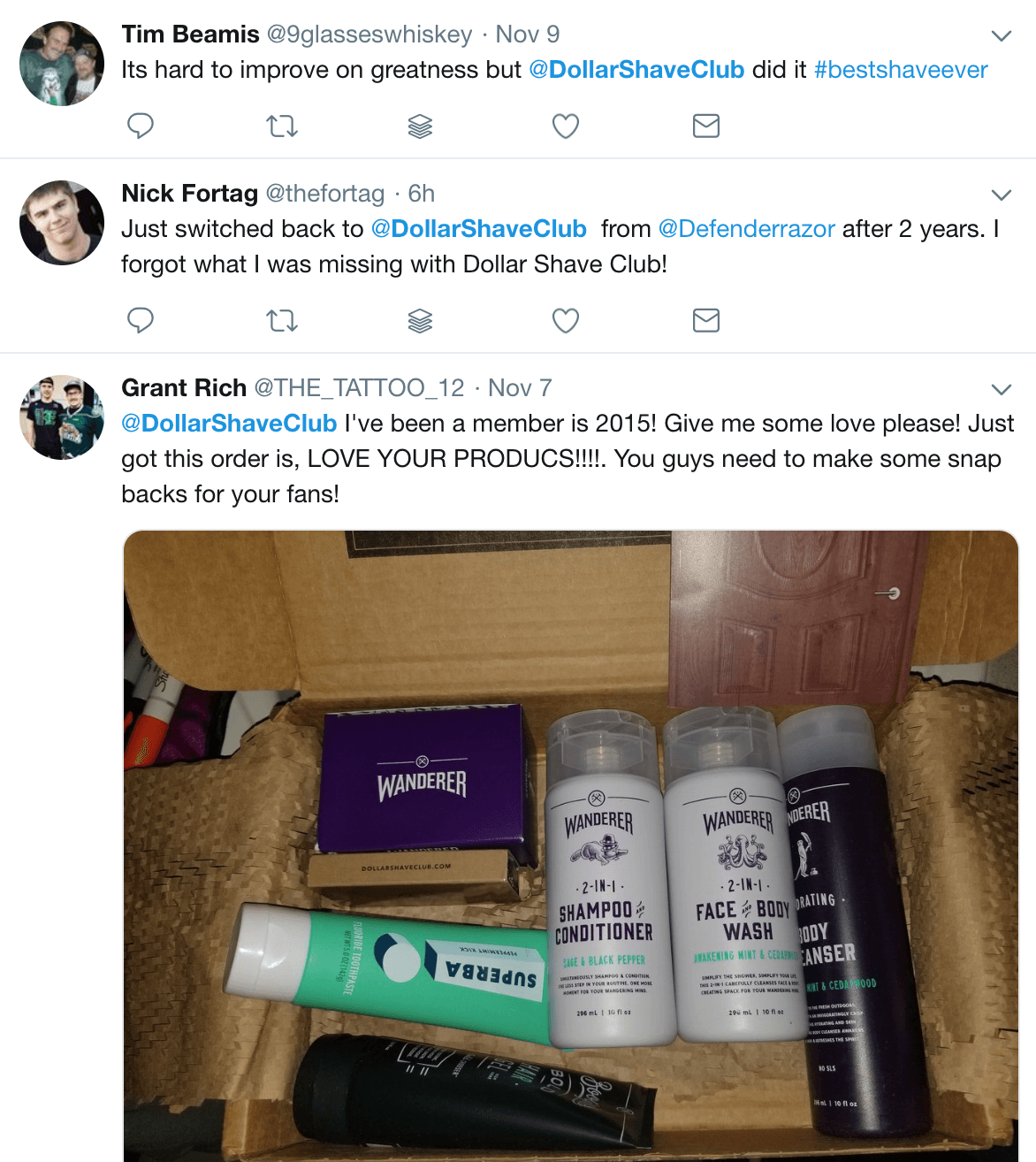
These brand advocates create awareness among new potential customers, which feeds the top of your sales funnel.
Cool, right?
Now, it’s worth noting that although a sales funnel is often thought of as a linear, step-by-step process, in practice it is rarely that straightforward.
Often, the stages can overlap.
Plus, people may need to revisit a previous stage of the sales funnel before they’re ready to take the next step.
How to Create a Sales Funnel in 4 Steps
Now that you have a clear understanding of what a sales funnel is and how it works, let’s look at how to set one up.
To do this, we’re going to work our way through the four-step sales funnel formula:
- Attract
- Convert
- Close
- Delight
We’ll also look at the types of internet marketing you can use for each stage.
Step 1. Choose a Way to Attract Potential Customers
Before you can do anything you must create awareness. Then you must turn awareness into interest.
In other words, you must set up a way to attract new potential customers.
There are countless ways to do this. However, traffic and lead generation strategies fall into two main categories:
- Organic: Marketing activities that can be done for free. (Kinda.)
- Paid: Advertising activities that cost money.
Let’s take a closer look at each of them.
Organic Marketing Methods
Organic marketing methods are often thought of as “free,” but in reality, this is rarely the case.
Even if you decide to do them yourself, they will cost time and energy, and you may need to purchase specific marketing tools to help you.
Plus, most businesses end up hiring staff or freelancers to implement these marketing methods.
Here are some popular organic marketing methods which you can use to bring people into the top of your sales funnel:
- SEO (which stands for “search engine optimization”)
- Social media marketing (excluding paid advertisements)
- Content marketing (which allows you to raise your profile in search engines and create value to share on social media channels)
- Referral traffic (from other websites who link to your website)
- Direct traffic (from people who know about your brand and have visited your website before)
The image below shows the organic listings on Google’s search engine results page:
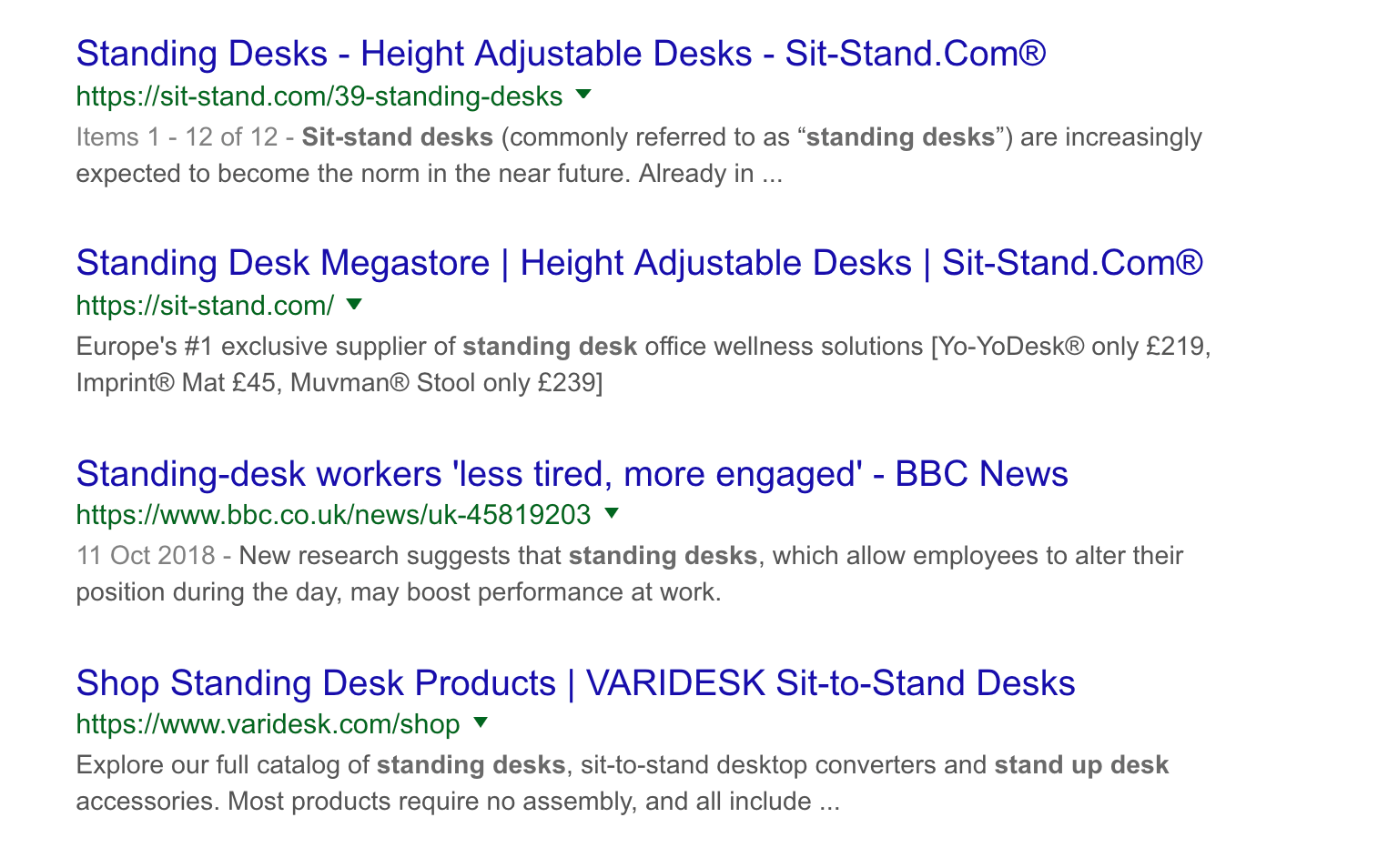
Paid Marketing Methods
Here are some popular paid marketing methods that you can use to generate awareness and interest:
- Instagram ads
- Facebook ads
- YouTube ads
- Twitter ads
- LinkedIn ads
- Google ads
- Influencer campaigns
- Affiliate marketing
Paid traffic is the fastest and easiest way to bring traffic to your website.
Instead of fighting for attention on social media or trying to rank your website on the first page of Google, you can simply pay to place your message in front of your target audience.
An effective way to do this is through influencer marketing.
In this example, North Face paid influencer Chelsea Kauai to promote their brand on her Instagram account.
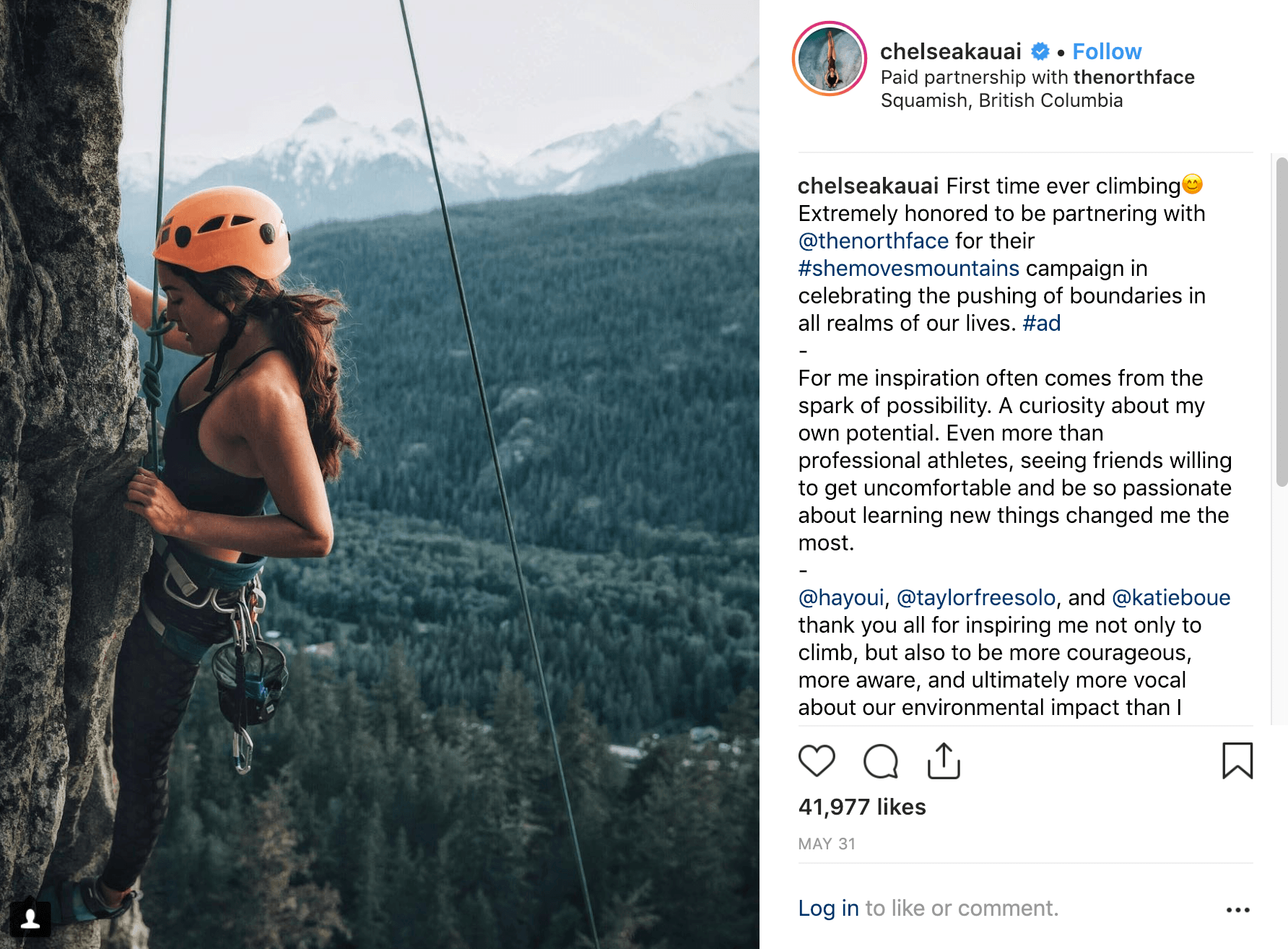
Obviously, the key downside is that it can cost a lot of money.
Plus, unlike organic marketing methods, as soon as you stop paying, your traffic will stop.
Step 2. Create a Compelling Offer to Convert Visitors into Leads
Once you’re generating interest, awareness, and website traffic, you need a way to nurture relationships with potential customers.
To do this, you want to convert visitors into leads. There are two main ways to do this online:
- Get people to follow your social media account(s)
- Collect email addresses
Both of these conversion methods allow you to continue your marketing messaging, deepen the relationship, build trust, and move people down your sales funnel.
But email marketing is better.
Why?
To start, email marketing allows you to own your customer relationships, so you can stop worrying about whether Facebook’s next update will ruin your business.
Plus, organic reach on social media platforms like Facebook has been declining for years.
So forget the glamor of having millions of followers and focus on capturing people’s email addresses instead.
How?
It’s simple: Create a compelling offer in exchange for signing up to your mailing list. Apparel brand So Worth Loving offers a 10% discount on your first order for signing up:
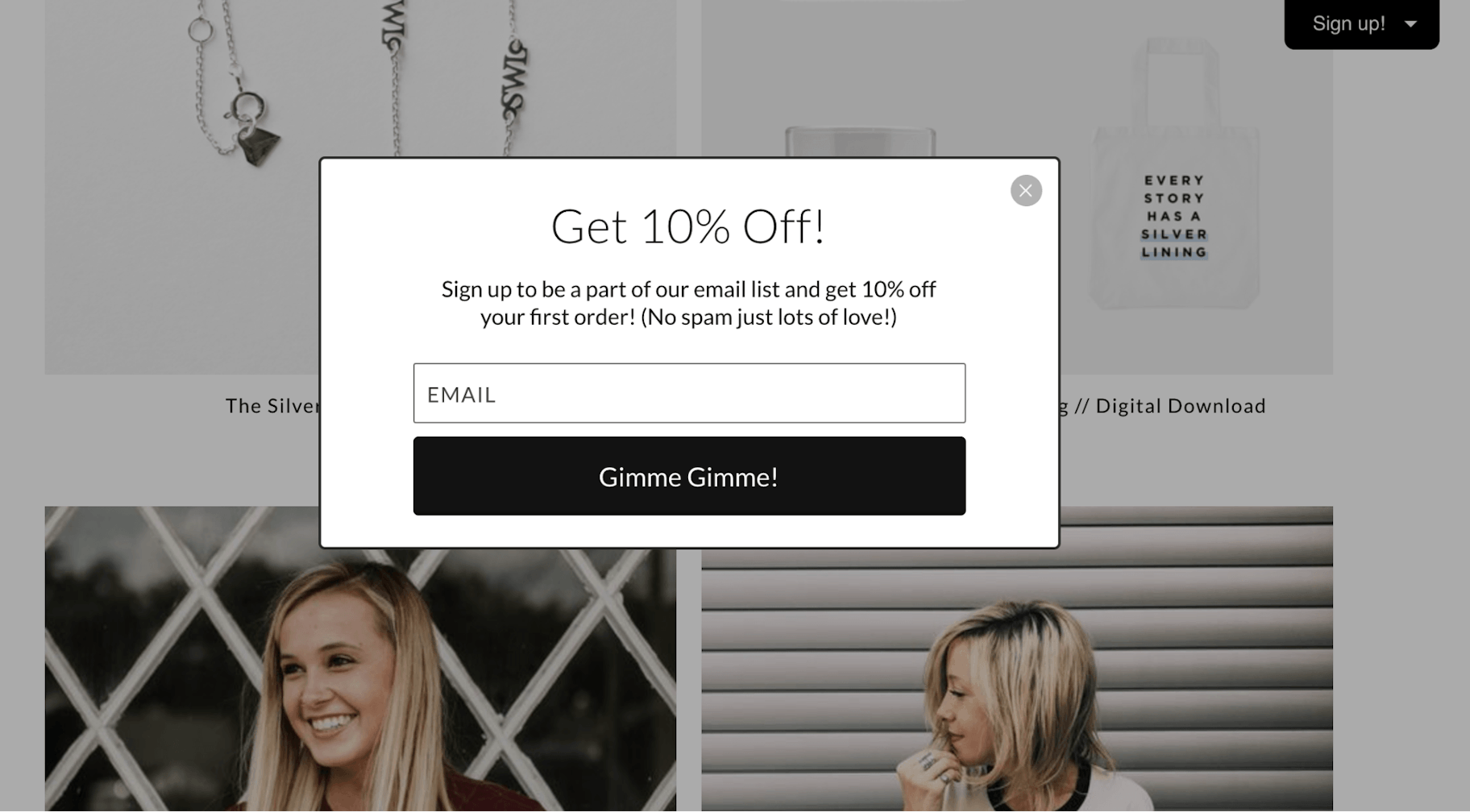
In addition to discounts, there are countless types of lead magnets you can create to entice people to give you their email address, such as:
- Ebooks
- Templates
- Resource lists
- Industry reports
- Infographics
- Quiz
- Desktop and smartphone wallpapers
- Mini email course
- Video content
- Webinar
- Script
- Slideshare
- Audiobook or guide
- Access to a Facebook group
- Case study
Once you’ve created your lead magnet, you need to create an automated email campaign to nurture leads and turn their interest into desire.
However, don’t forget to about your social media followers.
Although they aren’t as dedicated as your mailing list subscribers, they still represent a base of potential customers who have shown an interest in your brand.
So, engage them with content such as:
- Blog posts
- Videos
- Podcasts
- Live streams
- Webinars
- General social media posts
Hopefully, you can lead them to sign up to your mailing list or become customers.
Step 3: Create a Compelling Offer and Call-to-Action to Land Sales
You’ve generated awareness, turned it into interest. Now’s the time to create desire and close the sale.
To start, make sure you optimize your product page and create a compelling call-to-action that prompts people to purchase.
To increase the chances of closing a sale, you can use powerful persuasion techniques, such as social proof.
Social proof refers to the fact that people are heavily influenced by other people’s opinions and actions. In fact, almost 63% of consumers are more likely to purchase from a website if it has product ratings and reviews.
Businesses often employ social proof in the form of testimonials and reviews.
Minaal has an entire page on their website dedicated to positive reviews and testimonials:
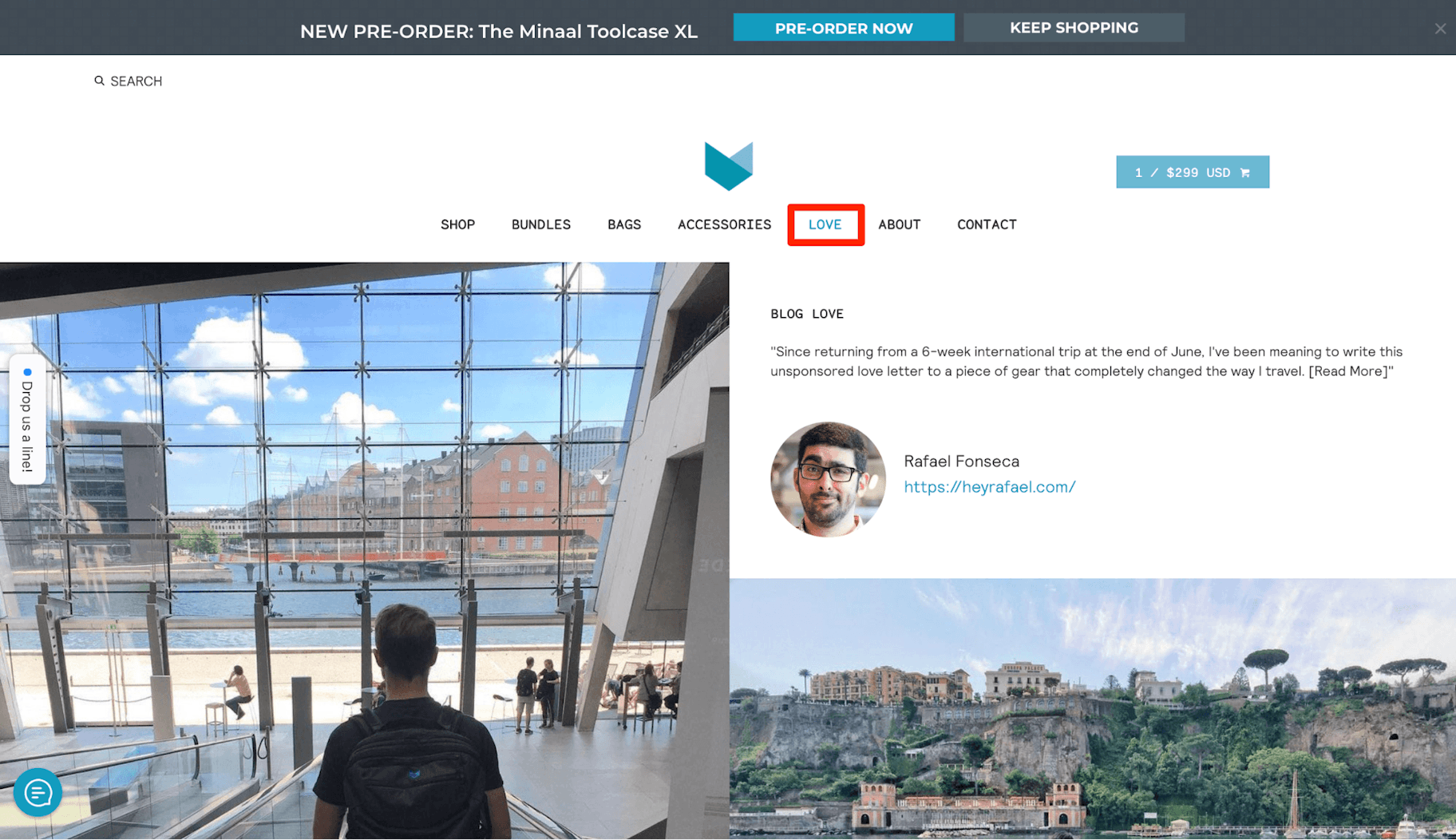
Step 4: Delight Your Customers with an Incredible Customer Experience
Whenever you make a new sale, you need to delight the customer in order to secure repeat business and turn them into a brand advocate.
How can you do this?
Provide useful information to help them get the most out of your product or service, and go above and beyond to provide an incredible customer experience.
If something goes wrong, follow Dollar Shave Club’s lead and use it as an opportunity to prove how much you value your customers:
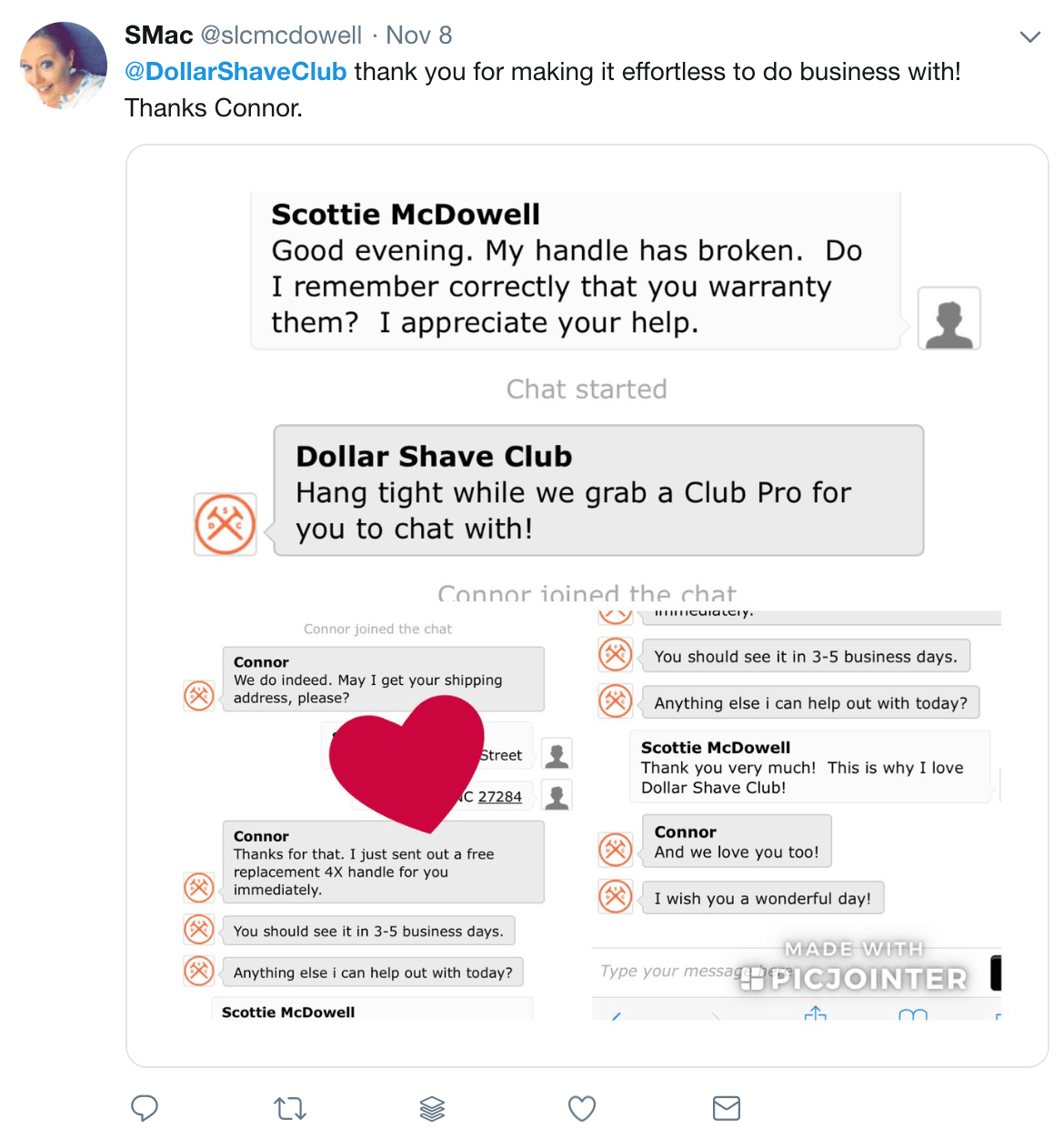
Then, set up a referral program to incentivize your happy customers to promote you to their friends and family.
Here’s an example from apparel brand UNTUCKit:
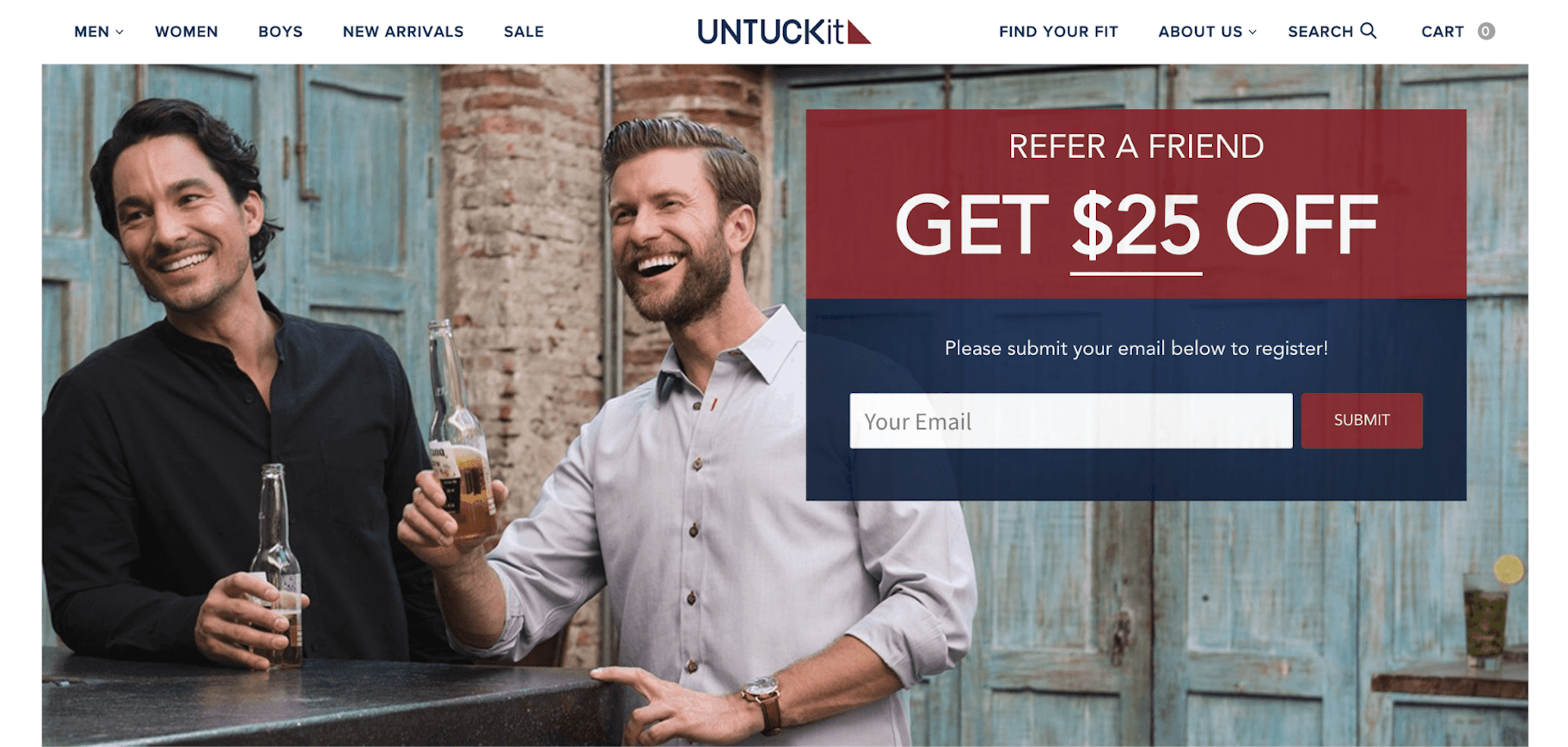
Summary
Remember, a sales funnel is the process of turning strangers into customers, and customers into brand advocates.
Make sure that you create a sales funnel to lead people through the seven stages of the buyer’s journey:
- Exposure
- Discovery
- Conversion
- Consideration
- Close
- Relationship and Retention
- Advocacy
Plus, once you’ve built your sales funnel, you need to continually test and improve it to prevent leaks and improve efficiency.
To learn more about sales funnels, check out our free ebook, Sales Funnels: The Definitive Guide.
Are you currently missing any stages of the sales funnel? Which ones? Let us know in the comments below!






